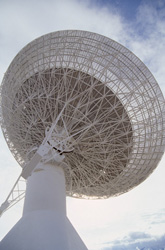Carbon nanotubes for field emitting cathodes
As telecommunication needs grow, the number of power transmitters on ground stations and on satellites multiplies. To meet the emerging needs of these satellites, the CANVAD project focused on developing inexpensive and compact amplifiers able to operate at higher frequencies (30 - 100 GHz). To achieve this goal, CANVAD uses field emission cathodes based on carbon nanotubes instead of thermionic cathodes used in microwave tubes. Carbon nanotubes are molecular-scale tubes of graphitic carbon with remarkable physical and electrical properties. Since they can be grown in the form of small, sharp spikes capable of carrying very high current densities, they comprise an excellent material for field emitting cathodes. In the process of designing the microwave vacuum amplifier, the calculations of various parameters have been performed through diode and triode test vehicles. Among the parameters calculated were the emitter-grid capacitance of the cathode/grid system and the electron transit time between cathode and grid. Moreover the electron emission of the CNT cathodes has been measured in an RF diode at a frequency of 1.5 GHz and in an RF triode working at 32 GHz. In addition the geometrical characteristics of the input and output cavity of the 32 GHz triode have been examined. The findings and potential use of new types of tubes based on CNT cathodes for integration in microwave systems will comprise a technological breakthrough for microwave equipment manufacturers and end-users.







